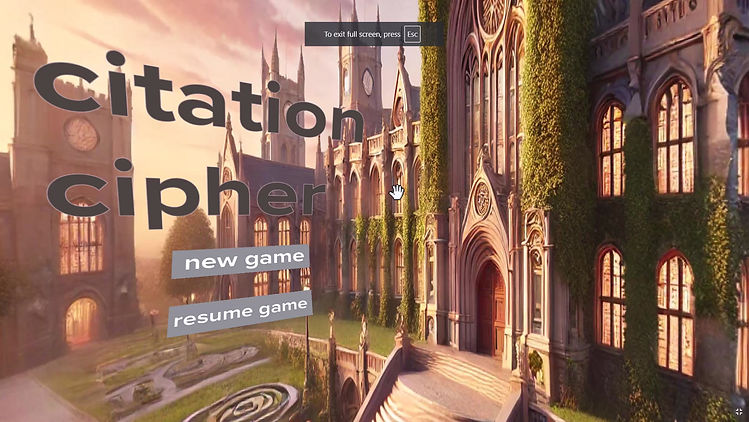Kat Abe
M.S. Instructional Design and Technology

Overview
This game proposal, along with the storyboard and game prototype, was developed in collaboration with my colleague, Kylie Gross. Together, we envisioned a "serious game" that balances entertainment with educational goals. The game is designed to be experienced through a first-person narrative set in a library virtual reality environment.
Audience: Upper-level high school students, college students, and graduate students. Players may have some basic knowledge of APA 7th edition citation rules, but this is not a required skill to play the game.
Tools Used: CenarioVR, Articulate Storyline, Adobe Stock, Miro
Problem and Solution
Studies claim students struggle with APA in-text citations and references. Furthermore, most students resort to AI tools or citation machines that may not generate accurate citations. We base our game proposal on learning theories and research that support using video games to teach many skills, such as problem-solving, pattern recognition, and cognitive skills, in an enjoyable and accessible format.
Design Document / Game Proposal:
-
Story Narrative
-
Game Play Elements (game progression, icons, levels, player's actions, "win state")
-
Game Genre
-
Educational Value
-
Licensing and Copyright
Learning Models and Theories:
-
RETAIN Model Rubric for Evaluating Serious Games
-
Cognitive Load Theory
-
Self-Determination Theory
Storyboard + Prototype
My colleague designed the game's flowchart on Miro and developed the CenarioVR virtual room (library setting, page icons, study hall, avatars, and interactive icons). I designed part of the game storyboard and developed the game puzzle on Articulate Storyline to incorporate some of the game elements (timer, scoring, sound effects).

Game Flowchart

Video of Game Prototype
The game prototype went through two iterations. The initial design featured a click-and-submit mechanic, a game timer, and an antivirus loading bar. In the second iteration, I aimed to replicate the look and feel of a computer database, added sound effects, and replaced the click-and-submit interaction with a more dynamic drag-and-drop feature.